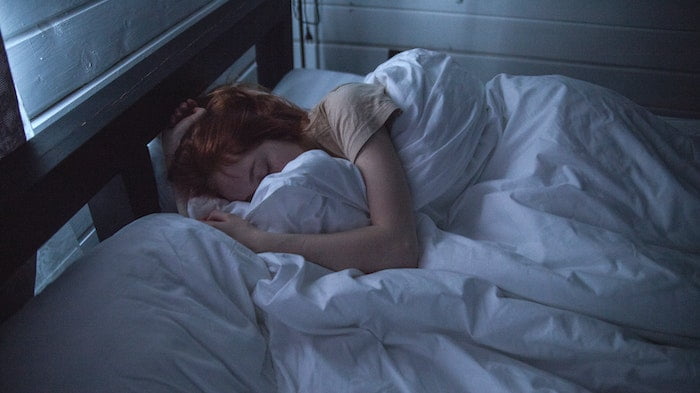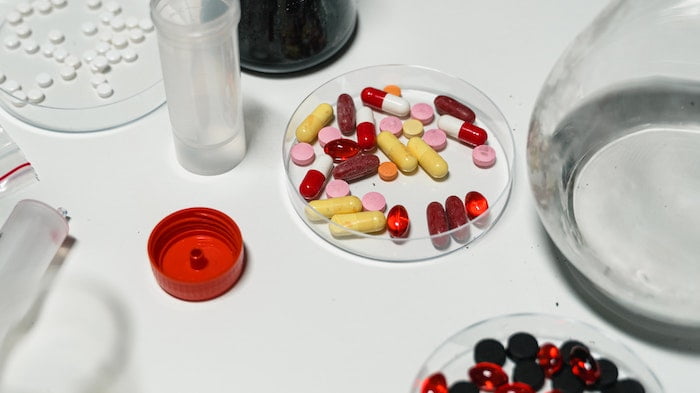- Home
- Drug Rehab
- Heroin Rehab & Detox: Treatment, Therapy & Aftercare
Heroin Rehab & Detox: Treatment, Therapy & Aftercare
Heroin is part of the opioid drug group and is a combination of extracts from the opium poppy plant and synthetic chemicals.
According to the World Health Organisation heroin is the most commonly abused drug throughout the world. (15)
Users can snort or smoke heroin but the riskiest way to take the drug is intravenously, as there is a strong chance that users may develop HIV and Hepatitis C via shared injecting practices (e.g needles).
Drug users who take heroin intravenously are also at risk of suffering skin infections, bacterial infections in their heart valves and collapsed veins. There is also a high risk of overdose associated with the process of injecting heroin.
Why do People take Heroin?

Opioid-based drugs are predominantly used for pain relief but their abilities to attach to opioid receptors in the brain and activate the dopamine pathway make opioid drugs like heroin much sought-after for recreational users seeking to boost their mood or gain a heightened euphoric state to escape their daily lives. (6,15)
Heroin, like other opioid drugs, elicits pleasurable feelings and a state of euphoria in people that consume the drug. Heroin also has anxiety-reducing qualities that enable people to feel more relaxed and help them to experience a positive mood and mindset. (9)
Diagnosing Heroin Addiction
Heroin addiction is now officially known as opioid use disorder and medical contributors to DSM5 advocate using the following criteria shown below to help patients receive an official diagnosis.
DSM5 helps medical professionals diagnose patients with different levels of severity for their heroin addiction. Patients who meet 2/3 of the 11 points of criteria will be categorized as having a mild addiction, patients who meet 4/5 of the criteria will fall into the moderate addiction category and those patients who meet 6 or more will be assessed as having a severe addiction. (2)
Main Criteria for Diagnosing Heroin Addiction

There are 11 criteria used overall for diagnosing heroin addiction including:
- Has the person significantly increased their heroin use over recent weeks or months?
- Have they tried to give up using heroin but been unable to stop or reduce their intake?
- Do they spend a lot of time trying to obtain heroin, use heroin and recover from its negative effects?
- Does it affect their ability to hold down a job and carry out domestic duties?
- Do they continue to use heroin even though it has caused them difficulties in their social and personal relationships?
- Have they stopped taking part in enjoyable leisure and recreational activities to use heroin?
- Do they continue to take heroin in light of the increased physical and psychological difficulties they are experiencing because of their heroin use?
- Do they take heroin even though it can have hazardous consequences (e.g driving or operating machinery)?
- Has their tolerance to heroin increased?
- Do they experience withdrawal symptoms when they stop taking heroin for a short period? (2)
Withdrawal Symptoms Associated with Heroin (opioid withdrawal)
A person diagnosed with heroin dependence will experience the following symptoms if they go for a period of 6+ hours without taking any doses of heroin:
- Low, depressed mood.
- Nausea or vomiting and upset stomach.
- Muscle aches.
- Runny nose and eyes
- Pupils become dilated.
- Diarrhoea.
- Excessive Yawning.
- Fever.
- Insomnia/sleep disturbance. (2)
Treatment Protocol for Heroin Rehab
Substance use practitioners have developed an established treatment protocol to implement when caring for patients with heroin addiction which consist of the following areas:
- Assessment stage.
- Pharmacological treatment.
- Psychological therapy.
- Relapse prevention.
- Aftercare. (15)
Assessment
All patients entering rehab will have an assessment carried out on them to identify their current level of intoxication and the severity of the addiction.
The rehab staff will use the assessment stage to investigate each patient’s medical, social, psychiatric and personal history and help devise a suitable treatment plan for them.
Pharmacological Treatment

Scientific research into the area of heroin addiction treatment has revealed that it is always preferable to begin any heroin rehabilitation programme with pharmacological interventions (detox) to stabilise the patient’s physical dependence.
In order to completely focus on the challenging psychological therapies that await them patients need to be free from the physical discomfort and not worry about being distracted by the uncomfortable withdrawal symptoms associated with the early stages of abstinence. (5,6)
The Purpose of Detox
All clients in rehab for heroin addiction will initially undergo detox treatment to eradicate the toxic effects of heroin from their bodies which will slowly reduce and eventually eliminate their physical dependence on heroin. (6,8)
Becoming physically dependent on heroin is one of the key symptoms of addiction. A person can be judged as being physically dependent on heroin when their tolerance towards heroin has increased.
This means that over time they will need to take greater amounts of heroin to carry on experiencing its pleasurable effects as the body and brain have become familiar with processing the drug.
If, after having built up a tolerance to the heroin they then experience withdrawal symptoms after going 6-24 hours without taking heroin it is likely they are physically dependent on the heroin and in need of treatment. (6,15)
The substitute drugs used for detox procedures for heroin dependence are chemically similar to heroin, which results in them preventing intense withdrawal symptoms when patients stop taking heroin.
Substitute drugs do not contain any physically addictive properties, nor do they produce pleasurable feelings in the user which play a significant role in the addictive process.
The substitute drugs only need to be taken every 24 hours as they are slow-acting drugs gradually released into the body, unlike heroin which is a much faster-acting drug which means heroin users can become dependent on the drug very quickly.
Below are some of the stages of detox:
1. Withdrawal symptoms gradually become less severe
Taking a slow-acting replacement drug will gradually reduce the patient’s physical dependence as the toxic chemicals contained in heroin will be slowly reduced from the bloodstream as there will be a greater time gap between each dose.
As the level of heroin in the blood decreases so does the severity of the withdrawal symptoms. (6,15)
Substitute drugs remove the need for the patient to seek and use a harmful and illicit drug such as heroin.
As patients receive the drug in a safer form because it contains no addictive properties/chemicals the patient can find some headspace to stabilise their mind and slowly focus on their psychological therapy programme. (5,8)
2. Methadone and Buprenorphine are the substitute drugs used for heroin detox
Two substitute drugs mainly used to carry out heroin detox by drug rehab practitioners are methadone and buprenorphine.
Methadone
Methadone has been used for several decades for heroin detox and is available in powder, liquid or diskette form.
It is very advantageous to have heroin in liquid form as this makes it easier and more efficient for medical staff to measure the precise amount of the medication needed to prevent withdrawal symptoms from appearing for each patient.
This is important, as to help patients detox from heroin effectively the dose size of the substitute drug they take should gradually be reduced over time.
It is therefore important patients only take the amount necessary to prevent withdrawal as this will make the detox process run smoother and patients will recover quicker. (8,9)
Buprenorphine
Buprenorphine in chemical terms is a partial opioid agonist so produces lower euphoric effects than heroin and plays a key role in reducing cravings related to physical heroin dependence.
Buprenorphine has been established in the medical community as a very safe and effective drug which drastically reduces the risk of overdose and respiratory depression, and its chemical properties significantly reduce its potential for misuse. (9,15)
Naltrexone
Naltrexone is another pharmacological intervention used to treat opioid use disorder and is generally used as part of a patient’s recovery plan after they have completed their detox treatment.
Naltrexone is not part of the opioid drug group and therefore does not possess any addictive properties nor does it lead to abuse.
Naltrexone works by binding to opioid receptors in the brain and blocking any feelings of euphoria and sedation in the patient’s brain that heroin tends to activate.
This helps to decrease and suppress any strong cravings the patient may have for the drug and is therefore a key part of a patient’s relapse prevention plan. (11)
Detox treatment alone is NOT sufficient for recovery
It is imperative to stress that having detox treatment for heroin addiction does not mean the patient is cured or has completed their treatment.
Detox treatment only tackles the patient’s physical dependence on heroin as it eliminates the toxic elements of heroin from the patient’s bloodstream.
Patients are still likely to be addicted to heroin as their behaviour, unconscious motivations, thought patterns and emotional state remain the same and have not been treated yet.
Psychological dependence on heroin
As well as being physically dependent on heroin individuals trapped in the addictive process are simultaneously becoming psychologically reliant on heroin.
As a result, they have come to rely on heroin as it provides them with several psychological benefits.
These include boosting their mood, making them more confident and giving them mental resources to tackle the daily challenges to the point where they can no longer face the world without taking heroin.
Psychological Therapies for Heroin Rehab

The following interventions are used by heroin rehab practitioners to treat patients’ emotional reliance on heroin:
1. Narcotics Anonymous (NA)
Support group meetings are at the heart of heroin addiction treatment and anyone who feels that their heroin use has spiralled out of control can attend these sessions and talk about their situation in the company of people who will understand what they are going through.
NA meetings follow the Alcoholics Anonymous ethos of fellowship and mutual support and offer a regular platform throughout the UK for all members to support each other in their struggles.
NA meetings do not tend to be linked to any rehab treatment centre, but all addiction treatment centres encourage their clients to attend NA meetings as it provides a valuable resource for recovering from substance misuse.
You do not have to be registered on a treatment programme for heroin addiction to join an NA meeting, all NA groups throughout the UK welcome new members with open arms and will endeavour to support them to help them stop their drug use.
2. 12 Step therapy
The 12-step programme stems from one of the early principles of Alcoholics Anonymous and many treatment centres have modified these 12 steps into a form that can be used in therapy sessions as the 12 steps are viewed as a template for successfully achieving recovery from addiction.
Each client will be shown how to work through the steps at their own pace, informed of the significance of each step and what they need to reflect upon to successfully work through each step. (6)
3. Highly effective cognitive-based therapies
Cognitive Behavioural Therapy (CBT) is a highly effective therapy for helping clients to pinpoint their own negative and inaccurate thought patterns that cause them psychological distress which only serves to maintain their heroin use.
CBT helps educate patients on their thought patterns and helps them to develop more productive and less harmful patterns of thinking about themselves and how they deal with stressful situations and unpleasant feelings.
Dialectical Behavioural Therapy (DBT) is a skills-based therapy where patients learn new techniques to deal with strong emotions under the careful supervision of a trained therapist. Patients will learn to experience and accept strong and painful emotions without being overwhelmed by them.
Given time, patients will then be able to implement these strategies on their own which will help them eliminate their usual automatic response of taking heroin when they experience stress or strong feelings. (1,15)
4. Motivational Enhancement Therapy (MET)
MET uses strategies from the area of motivational psychology and when it is used effectively it can stimulate rapid behaviour change as people find the motivation they need to work on their recovery plan and set clear future goals.
Therapists using MET will employ subtle psychological strategies to help draw out the patient’s own internal mental resources, so MET is slightly different to other therapies as the patient plays a key proactive role in collaborating with the therapist to improve their chances of a positive outcome. (7)
5. Group therapy
This form of therapy is different to support group meetings such as Narcotics Anonymous as the sessions are facilitated by a professional therapist.
The therapist will help all members present in the group express their feelings relating to their heroin use and to work through the personal challenges of recovering from addiction.
Discussing feelings and talking about your experiences in the company of people who can relate to what you are going through can be highly cathartic.
Group therapy helps patients build strong connections with other members and to develop a strong bond which will enhance their recovery as they will learn to support each other and appreciate each other’s circumstances.
Group therapy has also been known to improve patients’ social skills such as empathy, improved communication and respect and helps to reduce group members’ prejudicial tendencies. (13)
6. Holistic/complementary therapists
Addiction rehab managers have introduced many extra elements into their treatment programmes in recent years as they now understand the value of taking a biopsychosocial approach to recovery and thinking of the “whole” person when designing patient care plans.
This has resulted in patients being offered holistic therapies as part of their treatment programme, as they offer patients another way to process negative, traumatic feelings, which many patients are unable to do when engaging in traditional talk-based therapies.
Examples of holistic therapies include:
- Art therapy.
- Music therapy (including drum therapy).
- Drama therapy.
- Creative writing.
- Mindfulness.
7. Lifestyle
Rehab centres help patients review many aspects of their lifestyle to help them achieve a healthy lifestyle that can facilitate recovery from heroin addiction, these aspects include:
- Exercise.
- Diet and nutrition.
- Develop healthy sleep patterns.
- Social support/community involvement. (12)
8. Relapse prevention
Scientific research in the area of addiction has found that heroin is a really difficult drug to give up as people who become dependent on the drug can experience strong cravings which are difficult to resist.
Many people in recovery make good progress but do end up relapsing back into heroin use.
To help clients in rehab prepare for life after their treatment programme has finished rehab centres run relapse prevention workshops to help clients develop the cognitive skills necessary to resist strong cravings and deal with difficult emotions.
These skills are important to master as uncomfortable feelings such as anger, sadness, fear and anxiety can all trigger relapses back into heroin use.
9. Aftercare plan for heroin rehab
It is highly unlikely any patient leaving rehab can go back to their previous life after completing their treatment programme and carry on as they previously did.
Many things have to change and when patients re-enter the world the onus is on them to continue to work hard so they do not undo the positive work they have achieved in residential rehab. (12)
Rehab staff work with clients to help develop an aftercare plan for them so that they can continue their progress and remain drug-free.
The client is encouraged to play an active role in contributing to their aftercare plan by setting their own goals and contemplating the meaningful activities that they would like to integrate into their weekly routine.
Aftercare plans tend to include the following:
- Rehearse coping strategies learned in rehab to implement when required.
- Understand and manage your triggers through constant reflective practice. Diary writing is a very useful tool for doing this.
- Arrange Naltrexone medication to help prevent cravings.
- Continue to regularly attend Narcotics Anonymous meetings and work through your 12-step programme.
- Establish a daily/weekly routine which includes exercise, healthy food, hobbies and good social relationships
- Set clear goals in several aspects of your life, this can include living arrangements, job/ career, education or exercise-based goals such as learning to swim and learning targets such as learning to play a musical instrument or learning a new language.
- Stay in touch with rehab treatment providers and attend any health/recovery-related workshops
- Arrange ongoing 1-1 counselling/psychotherapy sessions. (12)
Get Help Today

For further information and advice, contact Rehab Recovery today at 0800 088 66 86.
References
(1) Bennett, P. (2003) Behavioural and Cognitive Behavioural Approaches to Substance Misuse Treatment in Peterson, T. & McBride, A. (ed) Working with Substance Misusers: A Guide to Theory and Practice London. Routledge.
(2) Black, D., Grant, J. (2013) DSM5 Guidebook: The Essential Companion to Diagnostic and Statistical Manual of Mental Disorders, 5th Edition. APP. London.
(3) Flores, P. (2004) Addiction as An Attachment Disorder. Jason Aronson. Maryland (USA).
(4) Herie, A.M., Watkin-Merek, L. (2014) Relapse Prevention. In Herie, A.M. & Skinner, W. (ed) Fundamentals of Addiction: A Practical Guide for Counsellors. CAMH. Canada.
(5) Morse, G. (2007) Care of Opiate Users: Detoxification in Beaumont, B. (ed) Care of Drug Users in General Practice Radcliffe Publishing. Oxford.
(6) Moss, A, Dyer, K (2010) The Psychology of Addictive Behaviour. Palgrave McMillan. New York.
(7) National Institute on Alcohol Abuse and Alcoholism (2022) Motivational Enhancement Therapy Manual: A Clinical Research Guide for Therapists Treating Individuals With Alcohol Abuse and Dependence. available@Project MATCH Volume 2: Motivational Enhancement Therapy Manual (nih.gov)
(8) National Institute for Health and Care Excellence (2007) Drug Misuse in Over 16s: Opioid detoxification available @Drug misuse in over 16s: opioid detoxification (nice.org.uk)
(9) NHS (2022) Methadone. Available@ Methadone – medicine used to treat heroin dependence – NHS (www.nhs.uk)
(10) Rassool, G.H. (2011) Understanding Addictive Behaviours. Palgrave MacMillan. New York.
(11) Substance Abuse and Mental Health Services Administration (2022) Naltrexone. availabe@What is Naltrexone? | SAMHSA
(12) Substance Misuse & Mental Health Services Administration (2021) SAMHSA’s Working Definition of Recovery. Available @ SAMHSA’s Working Definition of Recovery
(13) Tavistock and Portman NHS (2022) Group therapy. available@Group therapy (tavistockandportman.nhs.uk)
(14) Tsanos, A. (2014) Concurrent Disorders in Herie, A. & Skinner, W. (ed) Fundamentals of Addiction: A Practical Guide for Counsellors. CAMH. Canada.
(15) Yoon, R. (2014) Opioid Addiction, in Herie, M. & Skinner, W. (ed) Fundamentals of Addiction: A Practical Guide for Counsellors. CAMH. Canada.


